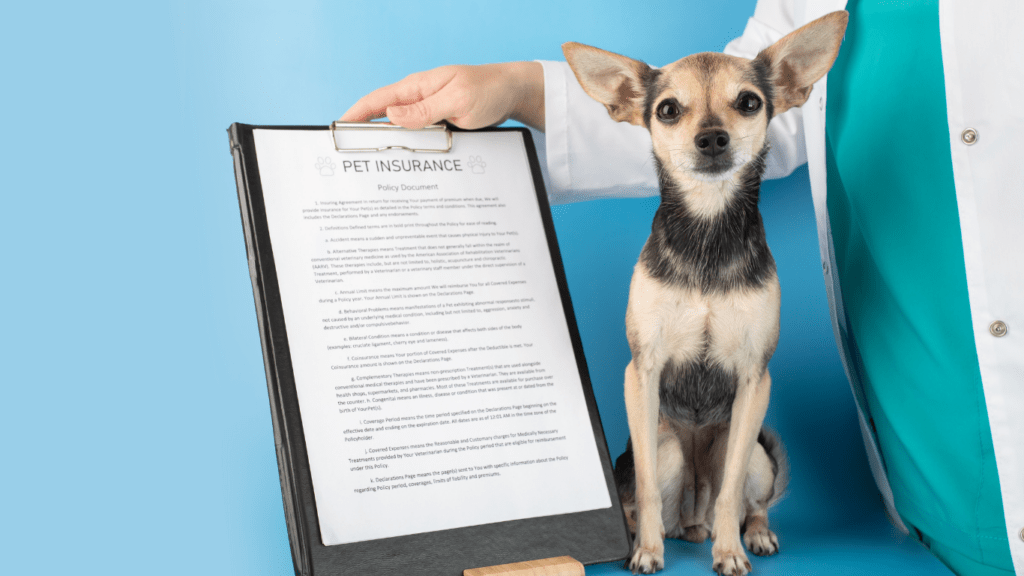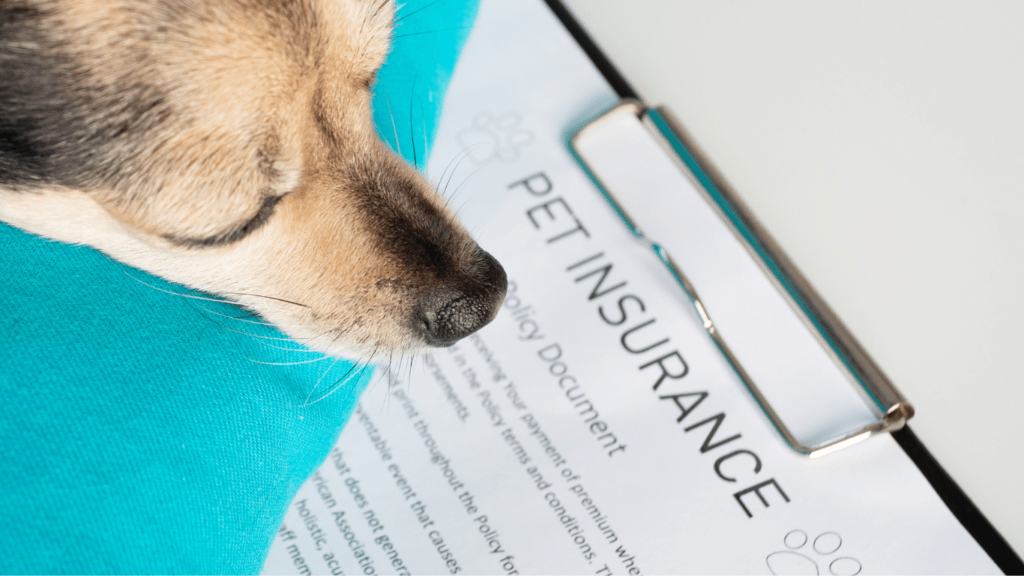Understanding Pet Insurance
Understanding pet insurance is crucial when considering it for your pet. Several key components define a pet insurance policy: premiums, deductibles, reimbursement rates, and coverage limits. These elements affect how much you’ll pay and what the policy covers.
Key Components of Pet Insurance
- Premiums: This is the amount paid monthly or annually to maintain the insurance policy. Premiums usually vary based on your pet’s age, breed, and health history.
- Deductibles: The deductible is the out-of-pocket amount you pay before insurance starts covering the costs. Deductibles can be annual or per incident.
- Reimbursement Rates: This is the percentage of the vet bill the insurance company reimburses after you’ve paid the deductible. Common rates are between 70%-90%.
- Coverage Limits: These caps determine the maximum amount the insurance company will pay per incident, annually, or over your pet’s lifetime.
Types of Pet Insurance Policies
Pet insurance policies often fall into three categories:
- Accident-Only Plans: These plans cover treatments resulting from accidents like fractures or ingestion of foreign objects. They don’t cover illnesses.
- Accident and Illness Plans: These comprehensive plans cover accidents and illnesses, including cancer, infections, and hereditary conditions.
- Wellness Plans: Wellness plans, typically add-ons, cover routine care like vaccinations, dental cleanings, and annual check-ups.
Factors Influencing Pet Insurance Costs

Several variables impact the cost of pet insurance:
- Pet’s Age: Older pets generally cost more to insure due to higher health risks.
- Breed: Some breeds are predisposed to specific health conditions, influencing premium costs. For example, Bulldogs may face higher premiums due to respiratory issues.
- Location: Veterinary service costs vary by location, affecting insurance premiums.
- Coverage Level: Broader coverage with lower deductibles generally results in higher premiums.
Benefits of Pet Insurance
Pet insurance offers numerous benefits:
- Financial Protection: Eases the financial burden of unexpected veterinary costs.
- Access to High-Quality Care: Ensures pets get the best care without financial constraints.
- Peace of Mind: Offers comfort knowing you’re prepared for unforeseen health issues.
Pet insurance, while an added expense, provides substantial value by protecting your wallet and ensuring your pet receives necessary medical care. Understanding these components helps make an informed decision, tailoring the policy to your pet’s needs and your financial situation.
Common Misconceptions
Pet insurance often raises questions and doubts among pet owners. Here are some common misconceptions clarified from a vet’s perspective.
Pet Insurance Is Too Expensive
Many believe pet insurance is unaffordable. This isn’t entirely accurate. Monthly premiums range from $20 to $100. Costs depend on factors like the pet’s age, breed, and location. For example, insurance for an older dog may cost more than for a young cat. Choosing a higher deductible reduces monthly premiums. Early enrollment in pet insurance can also lower costs by avoiding age-related premium increases.
All Policies Are The Same
A common myth is that all pet insurance policies offer identical coverage. In reality, plans vary significantly. Accident-only plans cover injuries due to accidents, like broken bones. Accident and illness plans cover both injuries and illnesses, such as cancer treatment. Wellness plans cover preventive care, including vaccinations and dental cleanings. Reviewing policy details like coverage limits and reimbursement rates is essential to selecting the right plan for a pet’s specific needs.
Vet’s Perspective
From my experience as a vet, pet insurance can significantly impact the decision-making process for pet owners seeking care for their animals.
Benefits Observed
Pet insurance encourages regular veterinary visits. I’ve seen pet owners bring their pets in more frequently when insurance covered preventive care services, such as vaccinations and wellness exams. This proactive approach helps catch health issues early, ensuring better outcomes for pets.
Financial support reduces the stress on pet owners. I observe less hesitation in authorizing necessary treatments when clients know that insurance will cover a substantial portion of the costs. As a result, pets receive timely and comprehensive care without delays caused by financial constraints.
Enhanced treatment options become available. Pet insurance often covers advanced diagnostics and specialist referrals. I’ve been able to recommend higher-quality diagnostic tests (e.g., MRIs and CT scans) and refer patients to specialists without concern over the client’s budget.
Challenges Faced
Insurance claims can delay treatment. In my practice, waiting for insurance approvals or reimbursements sometimes postpones critical treatments. This delay can be particularly problematic in emergency situations where timely intervention is crucial.
Policy exclusions can surprise pet owners. Clients occasionally discover that their insurance doesn’t cover certain conditions or treatments, such as congenital issues or alternative therapies. These exclusions can lead to frustration and financial strain if unexpected health issues arise.
Complicated paperwork burdens both pet owners and vets. Navigating the complexities of insurance forms and processing claims often adds administrative work. I’ve seen clients struggle with understanding policy terms, which can lead to misunderstandings and incorrect claims submissions. This administrative burden can take away time and focus from direct patient care.
Making an Informed Decision
Evaluating pet insurance requires considering multiple aspects to ensure the best choice for your furry friend.
Evaluating Your Pet’s Needs
Consider your pet’s age, breed, and lifestyle. Older pets often need more medical attention than younger ones. Certain breeds may be predisposed to specific health issues. For example, German Shepherds often face hip dysplasia risk, while Bulldogs may struggle with respiratory problems. Take note of your pet’s regular activities; active pets could face higher accident risks. Assessing these factors helps in selecting the appropriate coverage.
Comparing Different Policies
Examine policy options like accident-only, accident and illness, and wellness plans. Accident-only covers emergencies like fractures and ingesting foreign objects, while accident and illness policies address both emergencies and diseases like cancer. Wellness plans cover routine care like vaccinations and dental cleanings. Compare premiums, deductibles, and reimbursement rates across providers. Read the fine print to identify exclusions and limitations that may affect coverage. Use resources like consumer reviews and third-party ratings to gauge provider reliability. By comparing options, you can find a policy that offers optimal coverage for your pet’s specific needs.



 Pet Travel & Safety Consultant
Jimmy Dixoneser is the go-to expert on pet travel and safety at Pet Paw Shack. He provides valuable guidance on how to ensure pets are safe, comfortable, and stress-free when traveling. From creating checklists for pet-friendly vacations to advising on the best travel gear, Jimmy’s expertise helps pet owners confidently navigate adventures with their pets, whether on the road or in the air.
Pet Travel & Safety Consultant
Jimmy Dixoneser is the go-to expert on pet travel and safety at Pet Paw Shack. He provides valuable guidance on how to ensure pets are safe, comfortable, and stress-free when traveling. From creating checklists for pet-friendly vacations to advising on the best travel gear, Jimmy’s expertise helps pet owners confidently navigate adventures with their pets, whether on the road or in the air.
